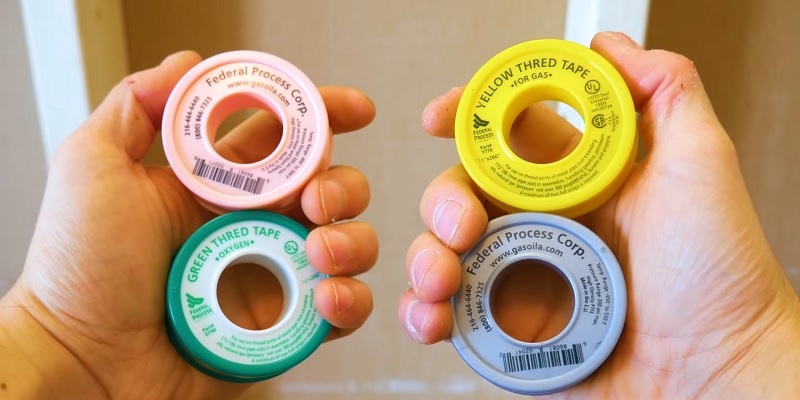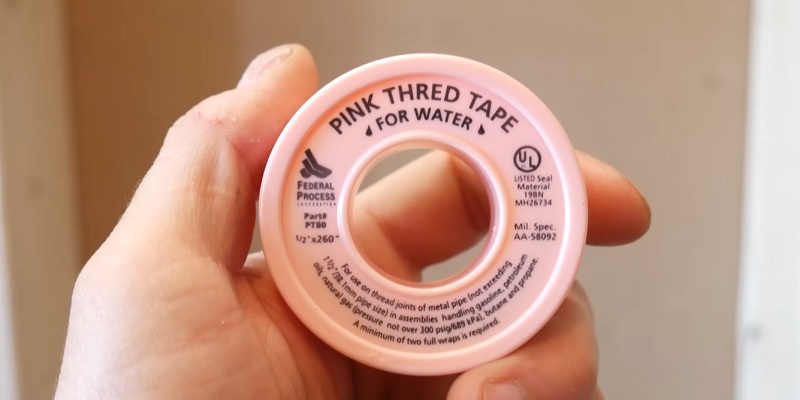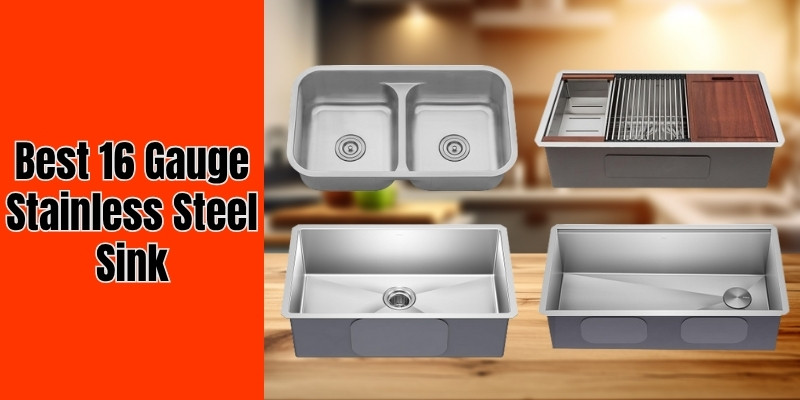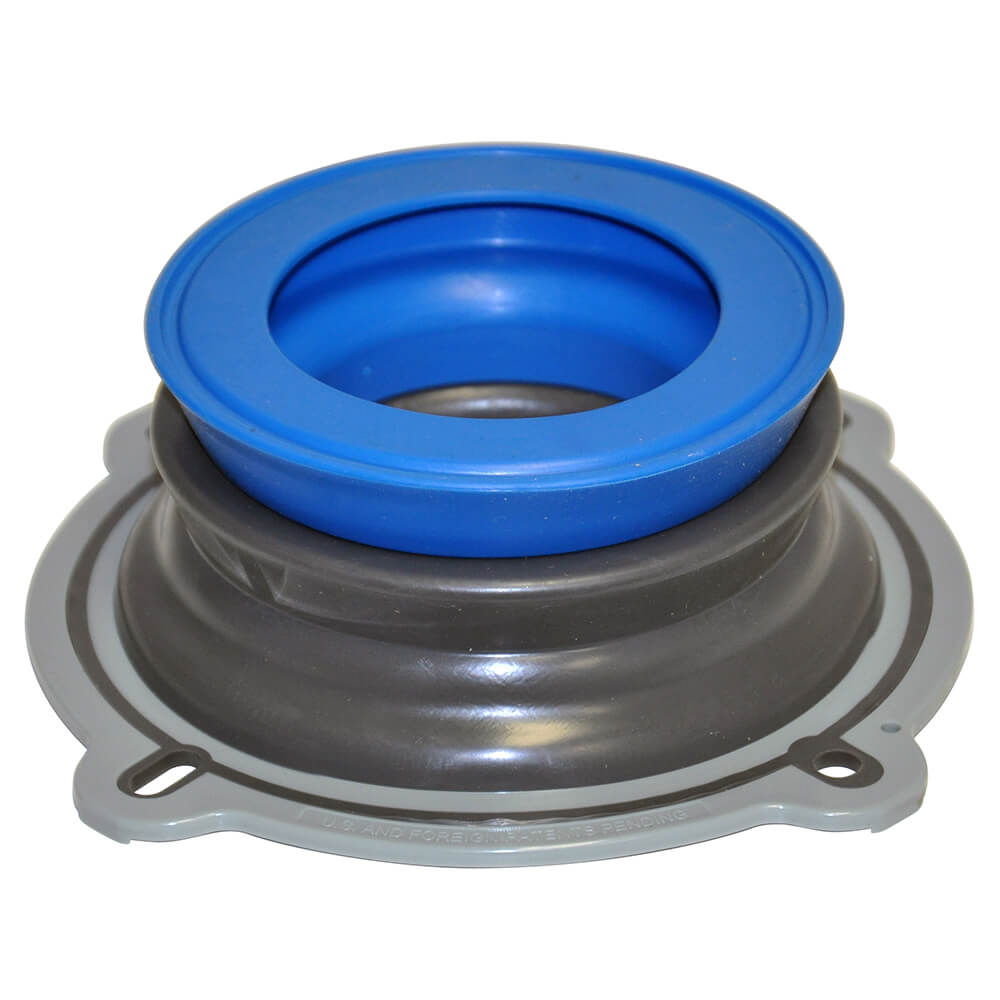Disclosure: This post contains affiliate links and I will be compensated if you make a purchase after clicking through my links. Learn More
When it comes to maintaining a safe and reliable drinking water supply in our homes, it’s essential to ensure that all components of our plumbing system are up to the task. One common material used in sealing pipe threads is Teflon tape, also known as plumber’s tape or thread seal tape. While Teflon tape is widely used in various plumbing applications, many homeowners may wonder if it is safe for use in drinking water systems.
In this article, we’ll dive deep into the world of Teflon tape, examining its composition, applications, and safety standards to answer the question: Is Teflon tape safe for drinking water?

What is Teflon Tape?
Teflon tape is a thin, stretchy tape made from polytetrafluoroethylene (PTFE), a synthetic fluoropolymer of tetrafluoroethylene. This material is known for its low friction, high temperature resistance, and excellent chemical stability. These properties make Teflon tape an ideal choice for sealing pipe threads in plumbing systems.
When applied correctly, Teflon tape fills the gaps between pipe threads, creating a watertight seal that prevents leaks and ensures a secure connection. The tape is wrapped around the male threads of a pipe before it is screwed into the female fitting. As the connection is tightened, the Teflon tape compresses and forms a seal that can withstand high pressure and temperature.
Teflon tape comes in different colors and thicknesses to accommodate various plumbing applications. The most common colors are white, yellow, and pink. White Teflon tape is the thinnest and is suitable for use on smaller pipe diameters, such as those found in residential plumbing systems.
Yellow Teflon tape is thicker and is often used on larger diameter pipes or in gas lines. Pink Teflon tape is designed for use in drinking water systems and is certified by NSF International, which we’ll discuss later in this article.
Teflon Tape in Drinking Water Systems
Teflon tape is commonly used in potable water supply lines to seal the threads of pipes, fittings, and valves. Its primary purpose is to prevent leaks and ensure a secure, watertight connection. However, some homeowners may be concerned about the safety of using Teflon tape in their drinking water systems.
The main concern surrounding the use of Teflon tape in potable water lines is the potential for chemicals to leach from the tape into the water supply. While PTFE itself is a stable and non-toxic material, the process of manufacturing Teflon tape may involve the use of other chemicals, such as perfluorooctanoic acid (PFOA) or perfluorooctane sulfonate (PFOS). These chemicals have been linked to various health concerns, including developmental issues, immune system problems, and certain types of cancer.
To address these concerns and ensure the safety of Teflon tape in drinking water systems, it is crucial to use only certified products that have been rigorously tested and approved for potable water applications.
Safety Standards and Certifications
NSF International is an independent, not-for-profit organization that develops public health standards and certification programs for products used in food, water, and consumer goods. When it comes to plumbing products, NSF International plays a vital role in certifying materials, components, and equipment to ensure they meet strict safety and performance requirements.
The most relevant standard for Teflon tape used in drinking water systems is ANSI/NSF Standard 61: Drinking Water System Components. This standard establishes health effects criteria for materials, components, and products that come into contact with drinking water.
To be certified under NSF/ANSI 61, a product must undergo rigorous testing to ensure that it does not leach harmful contaminants into the water at levels that could pose a health risk.
When purchasing Teflon tape for use in your home’s drinking water system, always look for products that bear the NSF/ANSI 61 certification mark. This certification ensures that the tape has been independently tested and verified to be safe for use in potable water applications. Many manufacturers produce NSF/ANSI 61 certified Teflon tape, which is often easily identifiable by its distinct pink color.

Proper Usage of Teflon Tape
To ensure the effectiveness and safety of Teflon tape in your drinking water system, it is essential to apply the tape correctly and follow the manufacturer’s instructions. Improper application of Teflon tape can lead to leaks, contamination, or even damage to your plumbing components.
Here’s a step-by-step guide on how to correctly apply Teflon tape to pipe threads:
Step #1 Begin by ensuring that the pipe threads are clean and free of dirt, debris, or old sealant. Use a wire brush or cloth to clean the threads thoroughly.
Related: How to Remove Old Teflon Tape
Step #2 Hold the end of the Teflon tape against the second thread of the male pipe, leaving the first thread exposed. This ensures that the tape doesn’t interfere with the initial engagement of the threads.
Step #3 Wrap the Teflon tape around the pipe threads in the same direction as the threads (clockwise for right-hand threads). Stretch the tape slightly as you wrap to ensure good adhesion and coverage.
Step #4 Overlap each layer of tape by about 50% to ensure complete coverage of the threads. The number of wraps needed depends on the diameter of the pipe and the thickness of the tape. As a general rule, aim for at least 3-4 wraps for small diameter pipes (1/2″ or less) and 5-6 wraps for larger diameters.
Step #5 After the final wrap, tear off the tape and press the end firmly against the threads to prevent unraveling.
Step #6 Screw the taped male pipe into the female fitting, being careful not to overtighten the connection. Overtightening can cause the Teflon tape to shred or bunch up, compromising the seal.
Common mistakes to avoid when using Teflon tape include
- Wrapping the tape in the wrong direction: This can cause the tape to unravel as the pipe is screwed in, leading to leaks.
- Using too much tape: Excessive tape can make it difficult to engage the threads properly and may cause blockages in the pipe.
- Covering the first thread: The first thread should be left exposed to ensure proper engagement and prevent tape from entering the water stream.
- Using the wrong type of tape: Always use NSF/ANSI 61 certified tape for drinking water applications.
By following these guidelines and using certified Teflon tape, you can ensure a safe and reliable seal in your home’s drinking water system.
Alternatives to Teflon Tape
While Teflon tape is a popular choice for sealing pipe threads in drinking water systems, there are alternative thread sealants available that are also suitable for potable water applications. Some of these alternatives include:
Pipe dope
Also known as thread sealant compound, pipe dope is a paste-like material that is applied directly to the pipe threads. It fills the gaps between threads and provides a watertight seal. Many pipe dope products are NSF/ANSI 61 certified for use in drinking water systems.
Read More: Teflon Tape Vs Pipe Dope
PTFE thread sealant cord
This is a thin, pliable cord made from PTFE material that can be wrapped around pipe threads in a similar manner to Teflon tape. PTFE thread sealant cord is often easier to apply than tape and can provide a more reliable seal in some applications.
Anaerobic thread sealants
These are liquid sealants that cure in the absence of air to form a tough, durable seal. Anaerobic sealants are applied directly to the threads and can provide excellent resistance to vibration, temperature fluctuations, and chemical exposure.
When deciding between Teflon tape and alternative sealants, consider factors such as the specific application, the size and material of the pipes, and the manufacturer’s recommendations. In some cases, alternative sealants may offer better performance or easier application compared to Teflon tape.
Maintenance and Precautions
To ensure the ongoing safety and reliability of your drinking water system, it is essential to regularly inspect and maintain the Teflon tape applications in your plumbing. Over time, Teflon tape can degrade, wear down, or become damaged due to factors such as age, exposure to chemicals, or physical stress.
Periodically check the Teflon tape seals on your pipes, fittings, and valves for signs of wear, such as fraying, cracking, or unraveling. If you notice any damage to the tape, it is important to replace it promptly to prevent leaks and potential contamination of your water supply.
When replacing old or damaged Teflon tape, be sure to follow the proper application techniques outlined earlier in this article. Use only NSF/ANSI 61 certified tape for drinking water applications, and ensure that the pipe threads are clean and free of debris before applying the new tape.
To maintaining Teflon tape seals, there are several precautions you should take when working with drinking water systems:
Always use certified components: Ensure that all pipes, fittings, valves, and other components used in your drinking water system are certified for potable water use by NSF International or another reputable organization.
Avoid cross-contamination: When working on your plumbing system, take care to avoid contaminating your drinking water supply with debris, chemicals, or other substances. Use clean tools and materials, and thoroughly flush the system before putting it back into service.
Hire a professional when needed: If you are unsure about how to properly maintain or repair your drinking water system, don’t hesitate to hire a licensed plumber. They have the knowledge, skills, and tools to ensure that your plumbing is safe, reliable, and compliant with local codes and regulations.
By following these maintenance practices and precautions, you can help safeguard the quality and safety of your home’s drinking water supply.
Final Thoughts
Teflon tape can be a safe and effective solution for sealing pipe threads in drinking water systems, provided that it is certified for potable water use and applied correctly. By using NSF/ANSI 61 certified Teflon tape and following proper application techniques, you can ensure a watertight seal that prevents leaks and maintains the integrity of your water supply.
Remember to regularly inspect and maintain the Teflon tape seals in your plumbing system, and replace any damaged or worn tape promptly. When in doubt, consult a licensed plumber to ensure that your drinking water system is functioning safely and efficiently.
By prioritizing the safety and quality of your home’s drinking water, you can protect the health and well-being of your family and enjoy peace of mind knowing that your plumbing system is up to the task.
FAQs
How often should I replace Teflon tape in my drinking water system?
The lifespan of Teflon tape depends on various factors, such as the quality of the tape, the conditions of your plumbing system, and the frequency of use. As a general rule, inspect your Teflon tape seals annually and replace any tape that shows signs of wear, damage, or leakage.
Can I use regular white Teflon tape for drinking water applications?
While white Teflon tape is commonly used in plumbing, it is not certified for use in drinking water systems. Always use NSF/ANSI 61 certified Teflon tape, which is typically pink in color, for potable water applications to ensure safety and compliance with health standards.
Is Teflon tape safe for use on PEX pipes?
Yes, Teflon tape can be safely used on PEX (cross-linked polyethylene) pipes, as long as the tape is certified for potable water use. However, some PEX manufacturers may recommend using specific types of fittings or sealants, so always consult the manufacturer’s guidelines before applying Teflon tape to PEX connections.
Related: PEX vs Copper Pipes
Can I use Teflon tape on hot water lines?
Yes, Teflon tape is suitable for use on both hot and cold water lines, as long as the tape is rated for the temperature range of your plumbing system. Most NSF/ANSI 61 certified Teflon tapes are designed to withstand temperatures up to 400°F (204°C), which is more than adequate for residential hot water systems.
What should I do if I suspect that my drinking water has been contaminated due to improper Teflon tape application?
If you suspect that your drinking water has been contaminated, stop using the water immediately and contact a licensed plumber to assess the situation. They can help identify the source of the contamination and recommend appropriate steps to remediate the issue, which may include flushing the system, replacing affected components, or testing the water quality. In some cases, you may also need to notify your local health department or water utility for further guidance.


